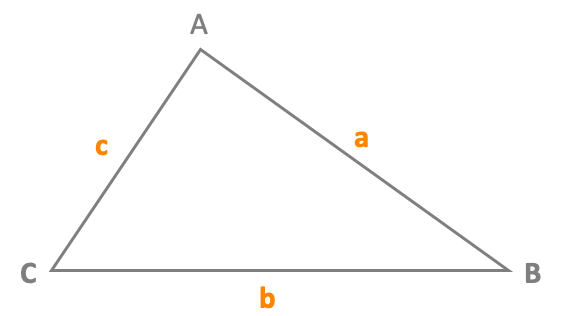Perimeter of a triangle |

|
|
|
|
AB = a BC = b CA = c ExampleABC is a triangle with a = 4 cm, b = 3 cm et c = 2 cmPerimeter P of a triangle ABC = a + b + c = 4 + 3 + 2 = 9 cm Calculate the perimeter of a triangle |
Definition of a triangleA triangle is a polygon having three sides. It is a closed figure with three sides.A triangle is a three-sided polygon that consists of three edges and three vertices. To calculate the perimeter of a triangle, add the length of its sides. The perimeter of a triangle can be calculated by adding the length of all the sides. The sum of all internal angles of a triangle is always equal to 180°. A triangle has three sides, three angles, and three vertices. The sum of any two sides of a triangle is always greater than the other side. An isosceles triangleAn isosceles triangle is a triangle having two sides of the same length.If a triangle is isosceles then its two angles at the base are equal. If a triangle has two equal angles, then it is isosceles. An equilateral triangleIn an equilateral triangle, all three angles are equal and measure 60°.An equilateral triangle is a triangle whose all three sides are having the same length. A right triangleA right triangle (American English) or right-angled triangle (British) is a triangle in which one angle is a right angle (90°).A right triangle is a triangle having two perpendicular sides. Properties of a triangleA triangle has three sides and three angles.The sum of the angles (internal angles) of a triangle is always 180 degrees. The sum of the length of any two sides of a triangle is greater than the length of the third side. The sum of all exterior angles of any triangle is equal to 360°. To go furtherThe perimeter of a triangle is the sum of the length of its three sides. |